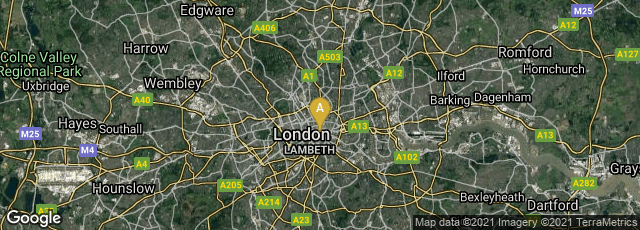Hand-colored aquatint depicting the burning of Albion Mills from The Microcosm of London (1808-1811).


A: London, England, United Kingdom
Designed by architect Samuel Wyatt and engineer John Rennie, and engineered and built by Matthew Boulton, Albion Mills in Southwark, London, on the river Thames, was the first steam-powered commercial flour mill in the United Kingdom. Completed in 1786, it became a symbol of the changes brought by the Industrial Revolution. The mill was powered by a huge double-acting 50 horsepower steam engine designed by James Watt, an associate of Boulton. The engine drove 20 pairs of millstones, each grinding nine bushels of corn per hour, or 6000 bushels of flour per week. The engine also provided power for fanning the corn to free it of impurities, for sifting it, for dressing the meal and lowering it into barges on the Thames. These factors made the mill more efficient than traditional flour mills in London, and drove its competition out of business, giving the mill a virtual monopoly on the London flour market. This had the effect of raising the cost of bread.
On March 2, 1791 fire destroyed Albion Mills. Damage was estimated at £150,000, and over 500 people working there became unemployed. Arson was suspected. London's independent millers celebrated with placards reading, "Success to the mills of Albion but no Albion Mills." Opponents referred to the factory as satanic, and accused its owners of adulterating flour and using cheap imports at the expense of British producers. A contemporary illustration of the fire shows several devils on and around the building. After the first the enterprise was never rebuilt.
Albion Mills was a short distance from the home of artist / poet William Blake, and it is believed that the shell of the Albion Mills building was the inspiration for the reference to "dark satanic mills" in his poem, And did those feet in ancient time.